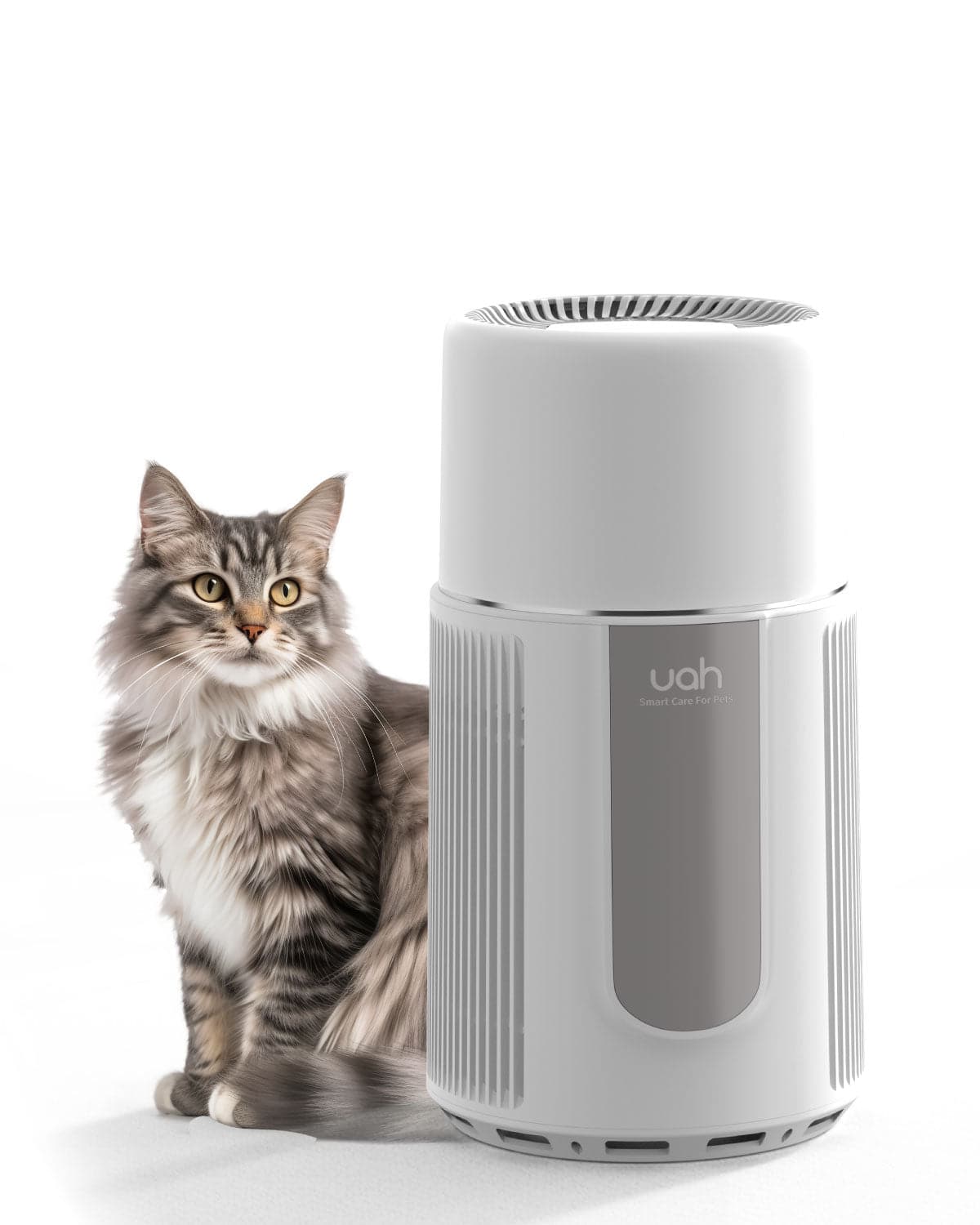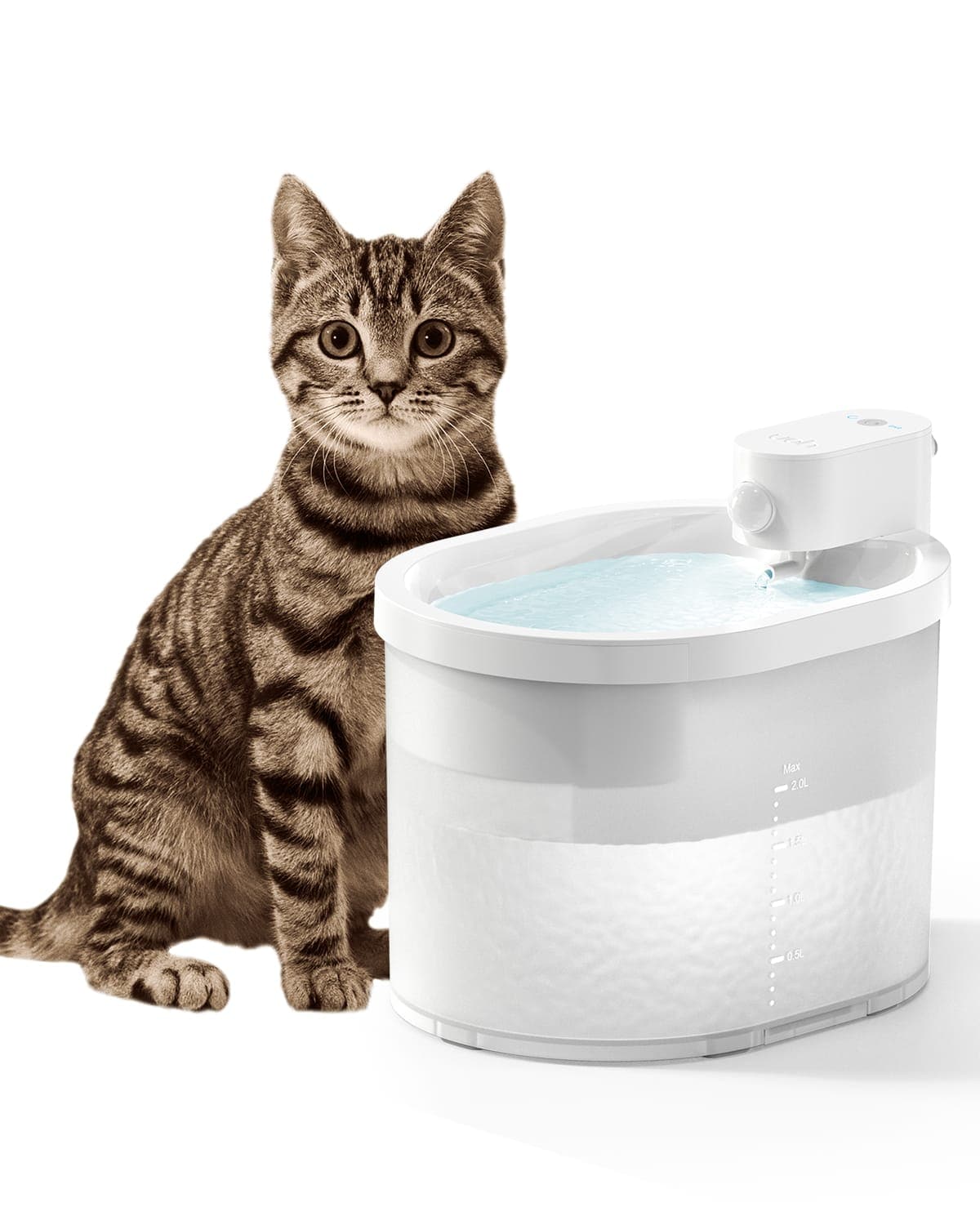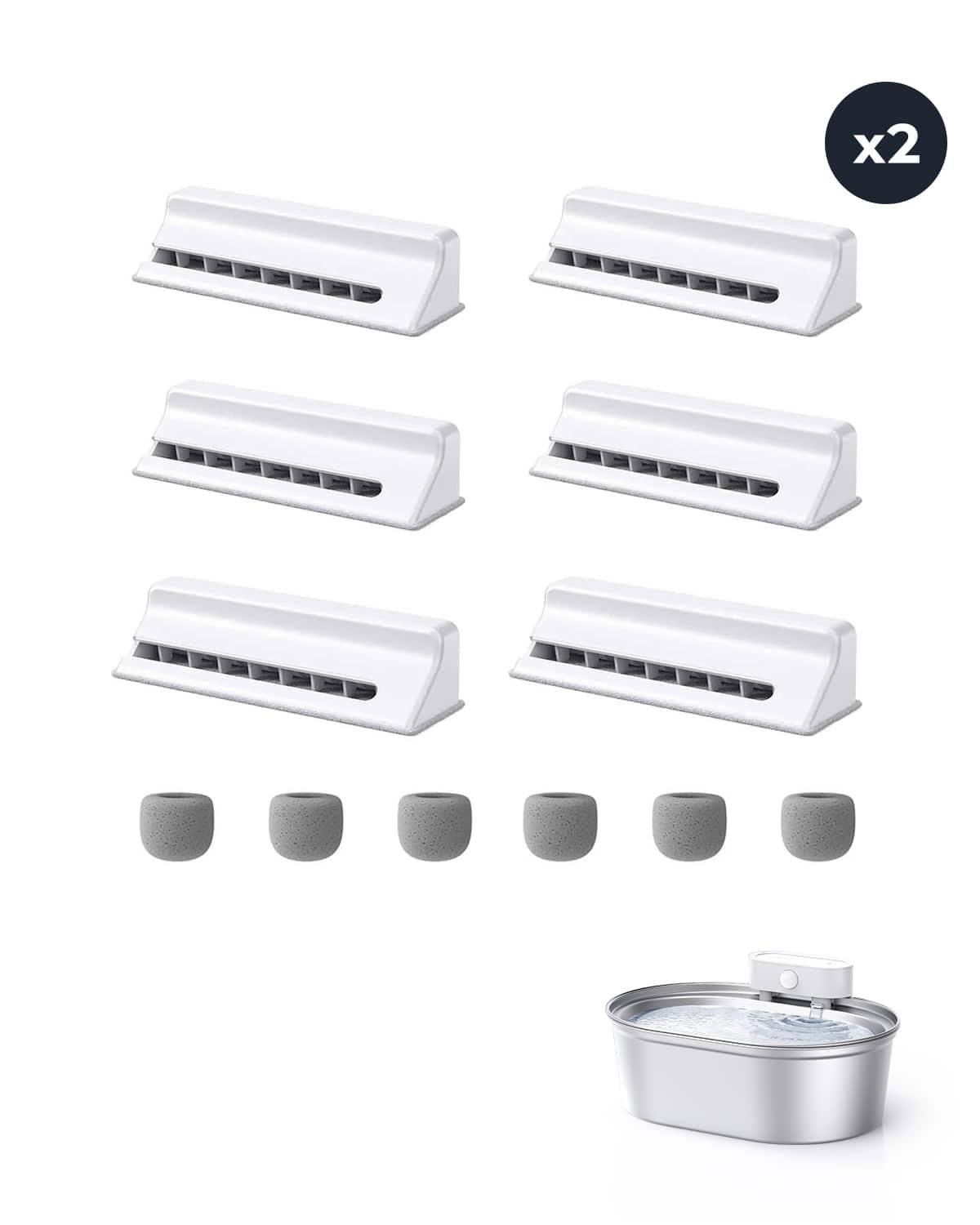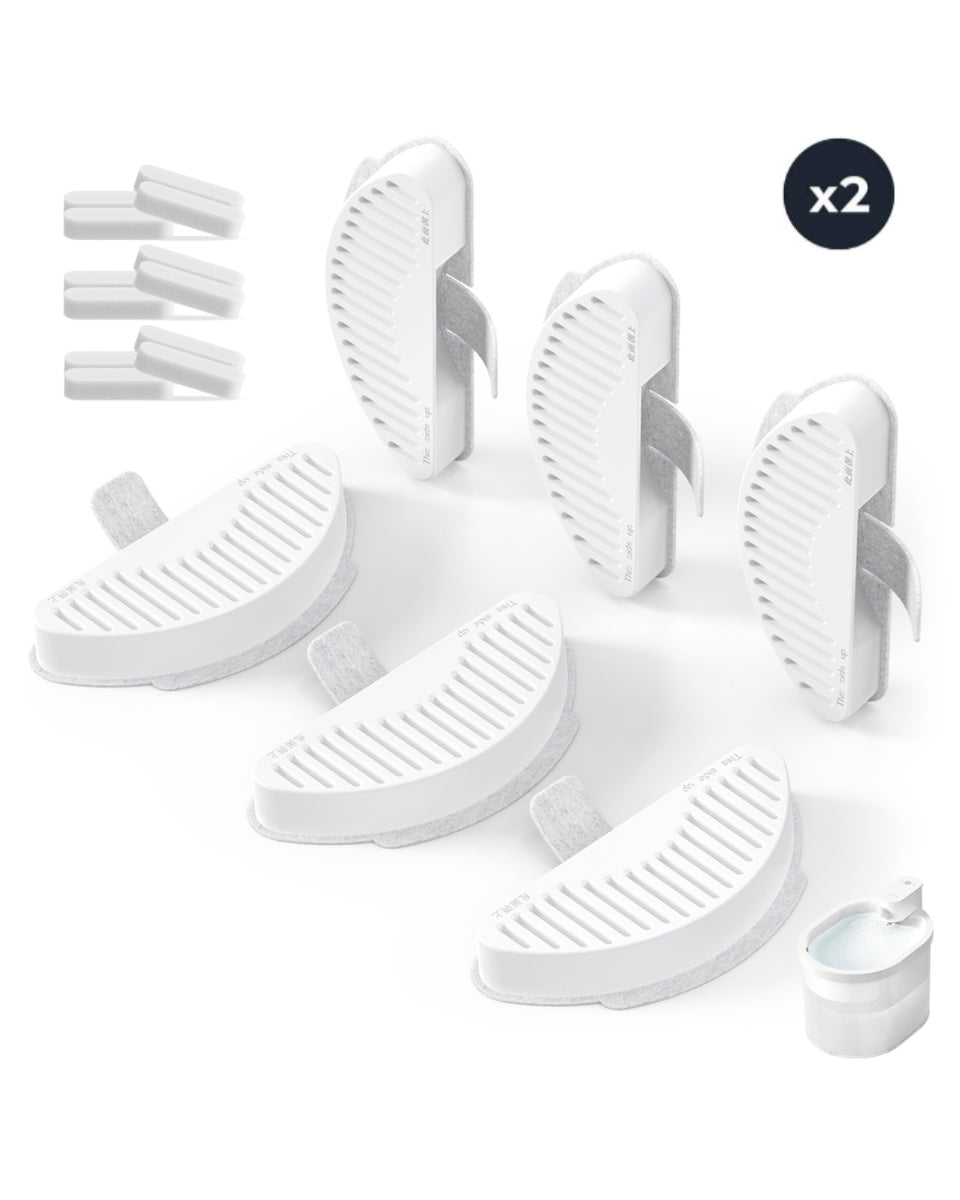How to Prevent Algae in Your Cat Water Fountain: A Comprehensive Guide
|
|
Time to read 6 min

UAHPET Stainless Steel Self-Cleaning Cat Litter Box

UAHPET 2025 Upgrade Visible Stainless Steel Cat Water Fountain Pro

Uah Pet Air Purifier

Uah Pet ZERO Wireless And Automatic Cat Water Fountain

12 pcs Replacement Filter for Stainless Steel Wireless Pet Water Fountain

12 pcs Uah Pet Replacement Filter for ZERO Cat Water Fountain
|
|
Time to read 6 min
If you have a cat water fountain, you've probably noticed algae buildup at some point. Algae can form in even the most well-maintained fountains, turning a clear, fresh drinking source into something green and unappealing. Not only can algae ruin the aesthetics of your pet's fountain, but it can also affect water quality, making it less healthy for your cat to drink. In this detailed guide, we'll explore effective ways to prevent algae from growing in your cat water fountain. As a proud pet parent and Uahpet customer, you deserve to provide your furry friend with the best possible hydration source, free from contaminants. Let’s dive in and keep your fountain algae-free!

Algae are simple organisms that thrive in moist environments, particularly when exposed to sunlight or when nutrients like dust and pet saliva accumulate. There are several reasons algae form in a cat water fountain, including:
1. Sunlight Exposure: Algae are photosynthetic, meaning they require light to grow. If your cat's fountain is placed near a window or in direct sunlight, it becomes a perfect breeding ground for algae.
2. Lack of Cleaning: Even with filters in place, pet saliva, food particles, and dust can introduce nutrients that support algae growth. Regular cleaning is crucial in breaking this nutrient cycle.
3. Warm Environment: Algae also thrive in warmer temperatures, so if the water in the fountain is consistently warm, it can facilitate growth.
4. Standing Water: Although a water fountain helps to keep the water circulating, there may still be areas where water is not actively moving, allowing algae to start growing.
To keep your cat's water fountain clean and algae-free, it's essential to adopt some preventive habits and maintenance techniques. Let’s explore practical and easy ways to prevent algae from forming.
1. Strategic Placement of the Fountain
Placing the water fountain in the right spot can significantly impact algae growth. Here are some tips to ensure your placement minimizes algae:
- Avoid Direct Sunlight: Keep the fountain in a shaded area, away from windows or places where it is exposed to natural light for extended periods. Indirect lighting is ideal, ensuring the fountain remains accessible to your cat but not favorable to algae growth.
- Indoor Environment Control: If you live in a particularly warm climate, ensure the room where the fountain is placed is kept at a moderate temperature. Algae growth slows in cooler conditions.
2. Regular Cleaning and Disinfection
Cleaning your fountain regularly is crucial in preventing algae buildup. Make it part of your weekly routine to properly wash and disinfect the unit.
- Daily Rinse: Rinse the fountain with hot water daily to remove any loose particles or pet saliva. This helps to keep it clean in between deep cleanings.
- Deep Cleaning Weekly: Disassemble the entire fountain every week and wash each part separately. Use mild dish soap and a brush to scrub away any biofilm or particles. Avoid using harsh chemicals, as they can leave residue harmful to your cat.
- Use of Vinegar: For particularly stubborn algae spots, you can use a diluted vinegar solution. Vinegar is a natural, non-toxic option that helps remove buildup while being safe for your pet. Rinse thoroughly after using vinegar to remove any lingering scent or taste.
3. Utilize Algae-Prevention Products
In addition to cleaning, certain products can help reduce the occurrence of algae:
- Algae Inhibitors: There are safe algae-prevention solutions made specifically for pet fountains that can be added in small quantities. Look for products labeled safe for cats and follow the instructions.
4. Filter Maintenance and Replacement
Most cat water fountains, including Uahpet products, use filters to maintain water quality. These filters require regular maintenance to prevent algae formation:
- Rinse the Filter: Rinse the filter under warm water weekly to remove debris. Rinsing helps ensure that the filter does not become clogged, which would reduce the water flow and potentially allow algae to flourish.
- Replace Filters Regularly: Filters should be replaced every 3-4 weeks, depending on your fountain type and water quality. A clean filter ensures that algae-promoting nutrients like food particles are removed effectively.
5. Opt for Stainless Steel Fountains
When it comes to material, stainless steel is less likely to harbor algae compared to plastic. Plastic fountains may develop tiny scratches over time, providing a foothold for algae to start growing.
- Stainless Steel: This material is less porous and easier to clean. Stainless steel fountains are also durable and don’t retain odors, making them a great choice for cat owners.
6. Keep Water Moving
Stagnant water is a breeding ground for algae, so keeping the water circulating is crucial.
- Pump Maintenance: Ensure that the fountain’s pump is functioning correctly. A malfunctioning pump can lead to stagnant water areas where algae may begin to grow. Clean the pump regularly by disassembling it and removing any hair or debris that may be caught inside.
- Increase Circulation: If your fountain has adjustable flow settings, keep the flow rate at a higher level to ensure adequate circulation. Increased movement makes it difficult for algae to settle and reproduce.
7. Use Distilled or Filtered Water
Tap water often contains minerals that can contribute to algae growth. Using distilled or filtered water in your fountain can help reduce mineral buildup and, therefore, algae.
- Reduce Nutrient Supply: Tap water may contain phosphates and nitrates that promote algae growth. Using distilled or filtered water minimizes these nutrients and helps keep the fountain clean.
- Mineral Deposits: Distilled water also reduces mineral deposits that can provide hiding spots for algae. Over time, these deposits can become a breeding ground for algae.

Keeping your cat's water fountain algae-free not only ensures that your pet has access to clean, fresh water but also contributes to your cat's overall health and well-being. Cats are naturally attracted to clean water sources, and having a fountain that remains fresh will encourage your cat to drink more, helping prevent kidney and urinary tract issues.
By following these tips, you can ensure that your Uahpet fountain remains clean, attractive, and algae-free, providing your beloved feline friend with a constant supply of healthy water.

At Uahpet, we know how important it is to maintain your cat's hydration in the best possible way. That’s why our cat water fountains are designed with the following features to reduce algae growth:
1. Triple Filtration System: The triple filtration system ensures optimal water quality by removing particles, cat saliva, and impurities that can promote algae growth.
2. Stainless Steel Models: We offer stainless steel fountains, which help resist algae buildup compared to plastic alternatives.
3. High Water Circulation: The pump and flow system in Uahpet fountains are designed to maximize water movement, reducing stagnant spots and minimizing the risk of algae.
1. How often should I clean my cat's water fountain?
We recommend rinsing your cat's fountain daily and doing a thorough deep cleaning every week. This will help prevent algae buildup and ensure the water stays fresh.
2. Can algae make my cat sick?
Yes, algae-contaminated water can potentially cause gastrointestinal issues in cats. Keeping the fountain clean and algae-free ensures that your cat’s health is not compromised.
3. Are plastic fountains more likely to get algae?
Yes, plastic tends to get scratched over time, which can harbor algae and bacteria. Stainless steel options are better for preventing algae buildup.
Preventing algae in your cat's water fountain doesn’t have to be a daunting task. By understanding why algae form, adopting consistent cleaning practices, and investing in high-quality, well-designed fountains like those offered by Uahpet, you can provide your cat with clean and fresh drinking water. As a committed pet parent, these small steps will make a significant difference in keeping your furry companion happy and hydrated.
Thank you for trusting Uahpet with your pet care needs. Together, we can ensure our beloved pets have the healthiest, happiest lives possible.